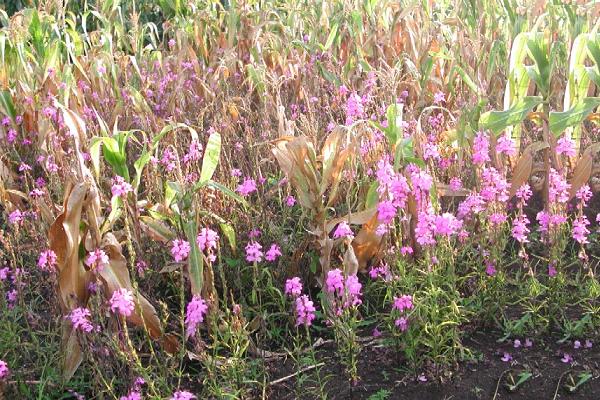Striga or witchweed are parasitic weeds that affects cereal crops in many parts of Africa reducing production by as low as 30% or as high as 100%. When a farm is infested with striga weeds, the affected plants hardly grow more than one foot tall. The weed does not grow on its own but grows by attaching itself onto the host plants. Each striga plant can produce up to 20,000-50,000 seeds, which lie dormant in the soil until a cereal crop is planted again. This dormancy can last for over 15 years. As striga germinates, its roots grow towards the host crop, penetrate that crop's roots and start to draw nutrients from there. This causes severe stunting of the host crop and yield loss.
In East Africa, there are two common species of the witch weed, Striga hermonthica and Striga asiatica. Striga hermonthica is common around Lake Victoria Basin while S. asiatica is mainly found in the coastal areas. The most affected crops include maize, sorghum, rice and sugarcane.Taking into account the peculiar nature of striga seeds, farmers are advised to control it before the weed emerges; the reason being that by the time it emerges, much damage will have been caused. Although various control methods have been proposed, few farmers are able to avoid yield loss by these means. For example, though manual removal reduces re-infestation, it is deemed uneconomical since most damage is done even before the weed emerges. Therefore, any control strategy has to begin within the soil. If maize plants are attacked by stemborer and striga weed, the yield loss could reach as high as 100%.
More about striga weed |


 Research Partners
Research Partners